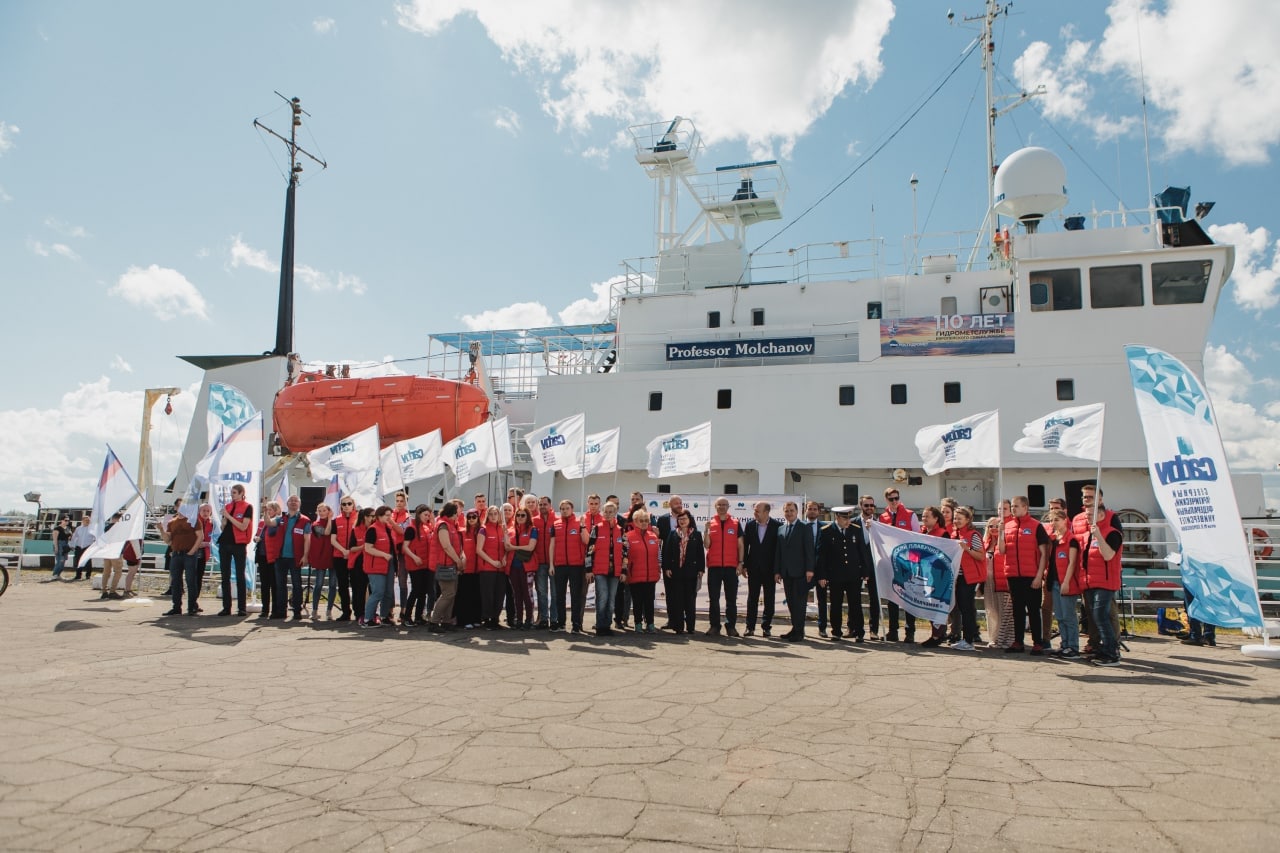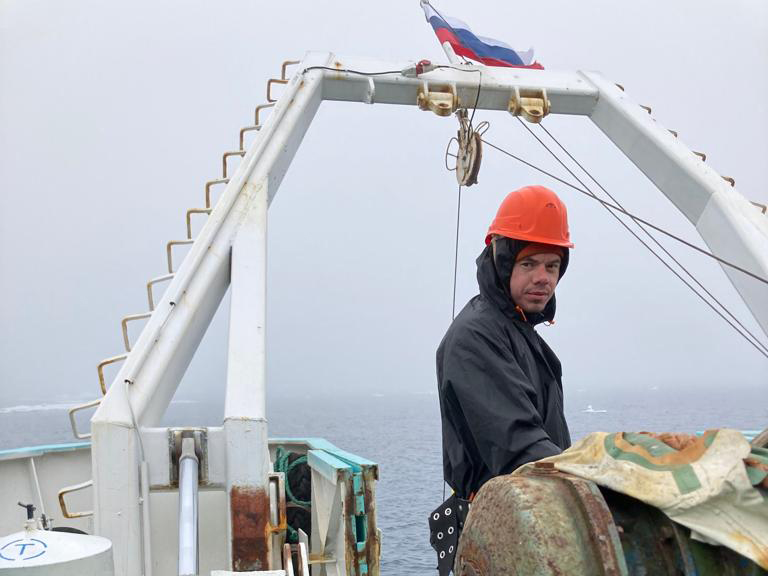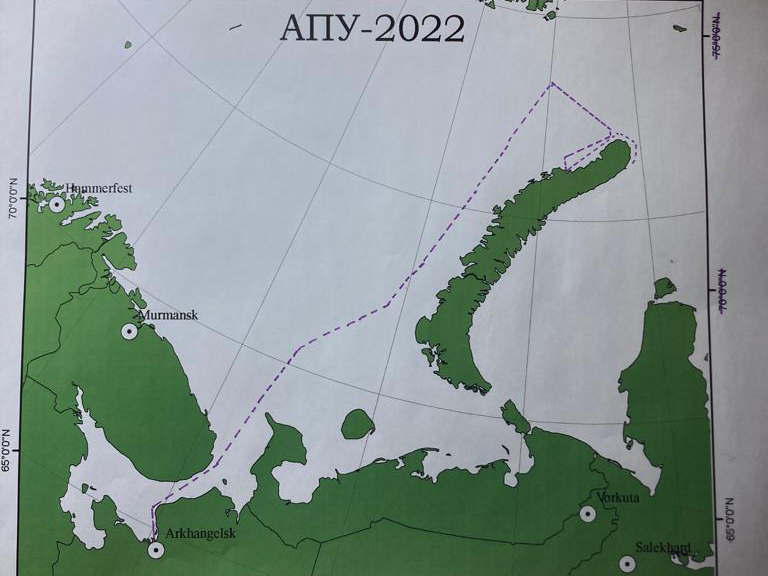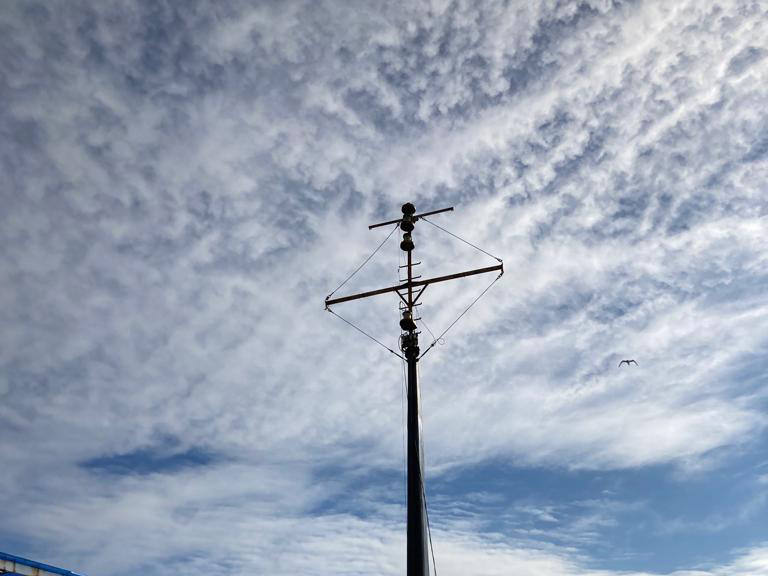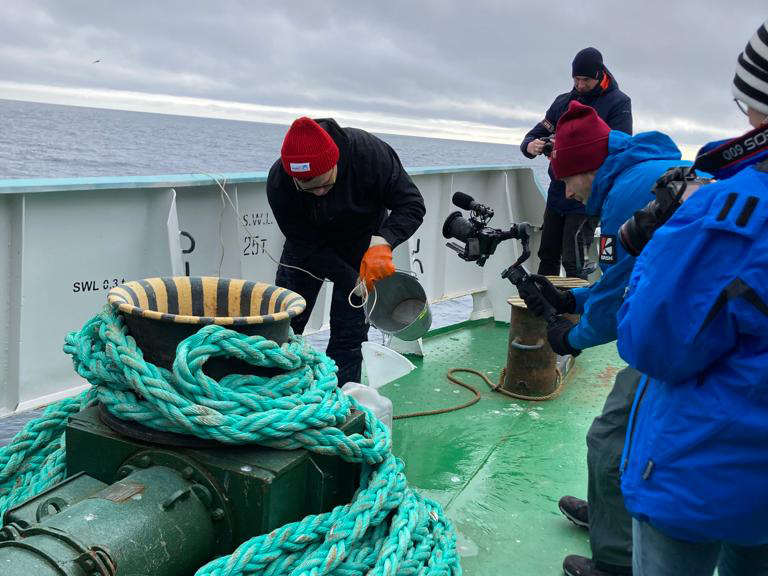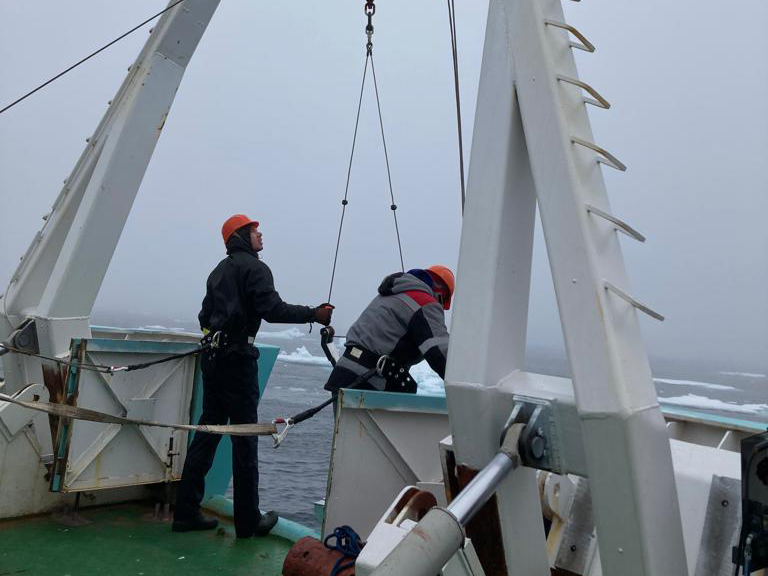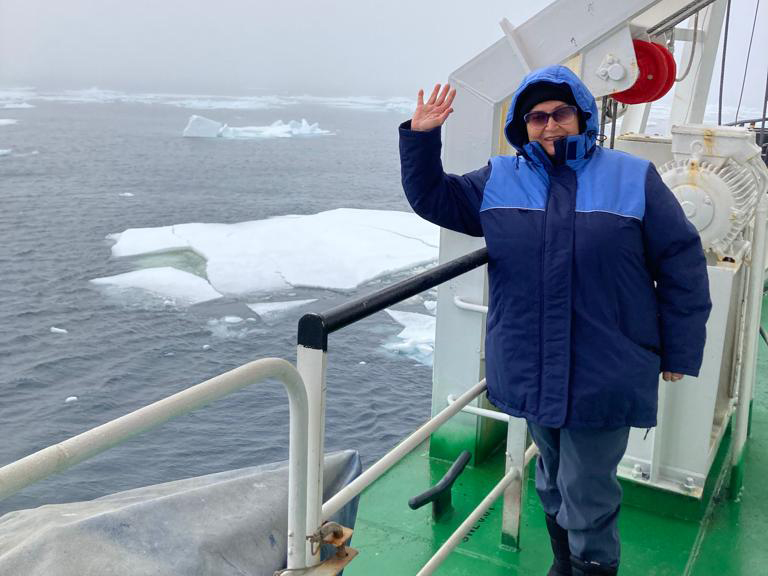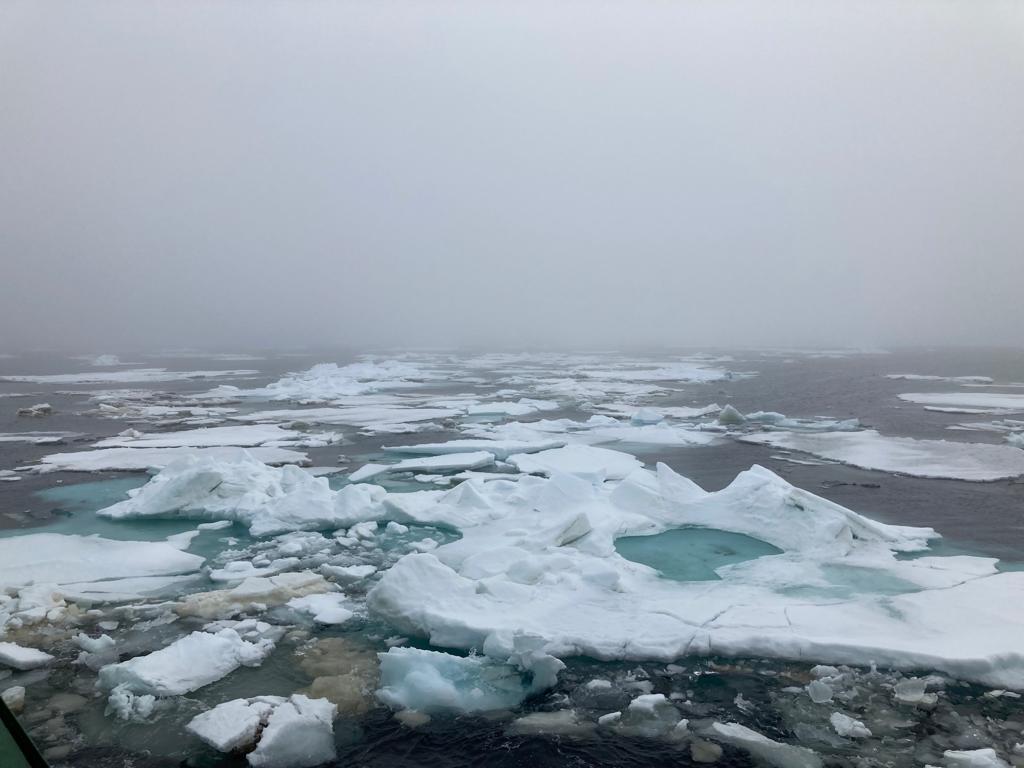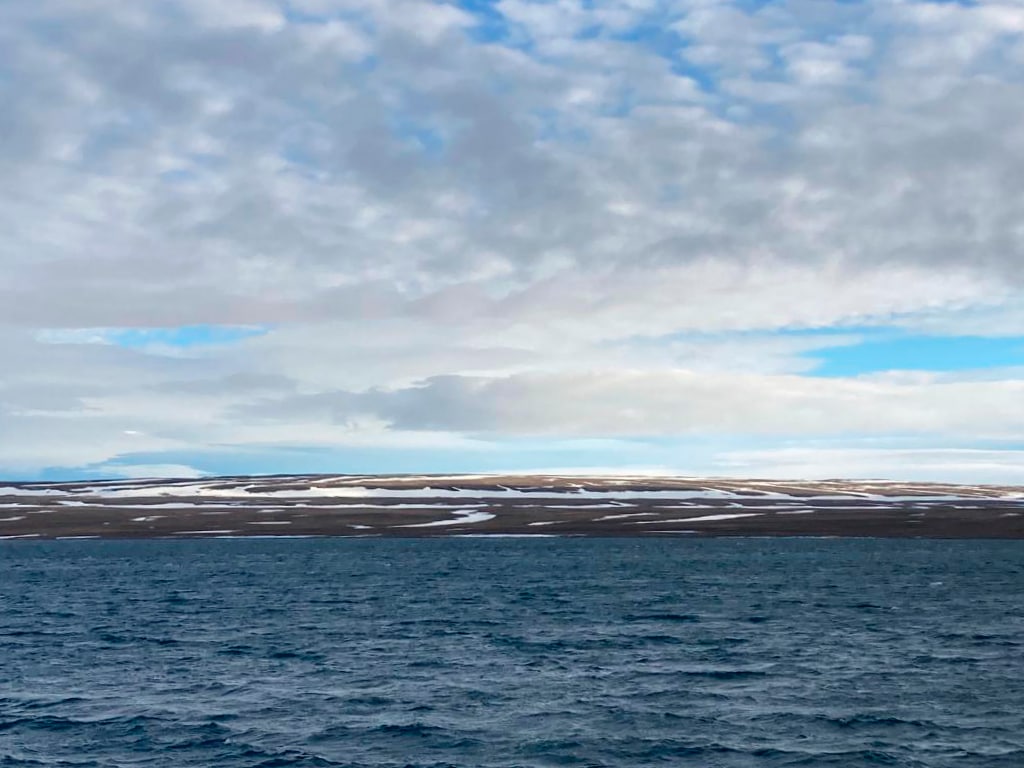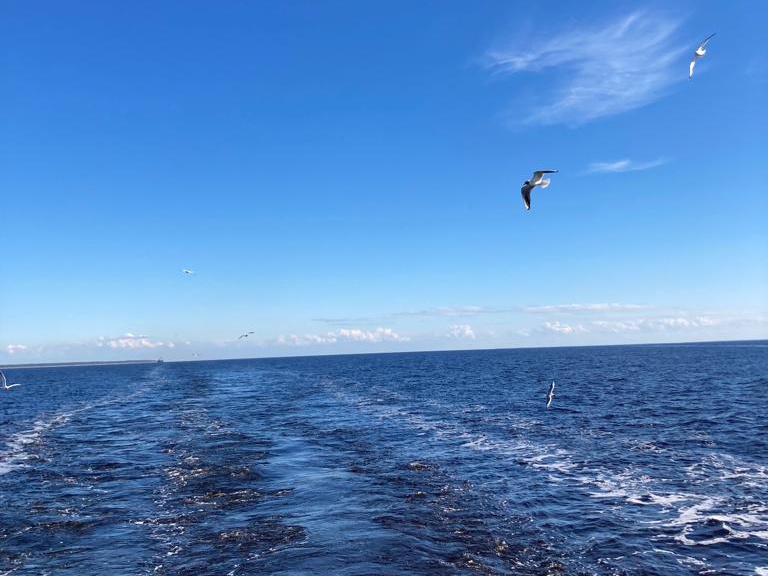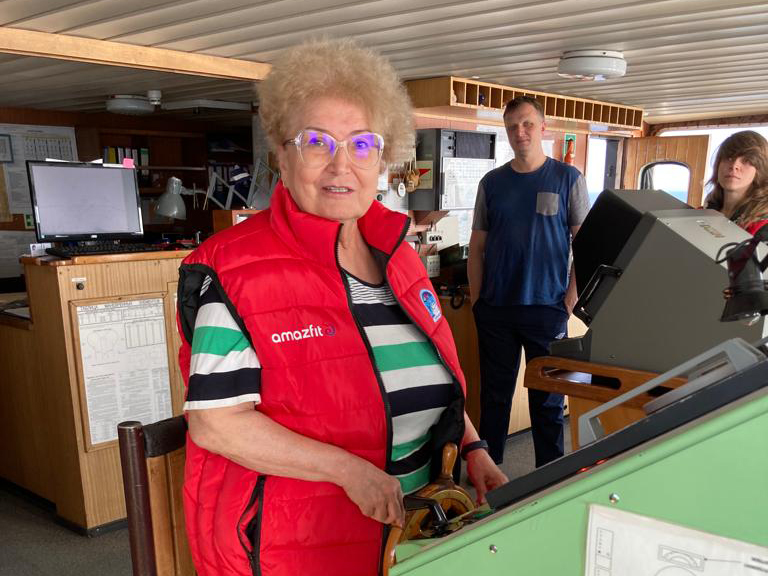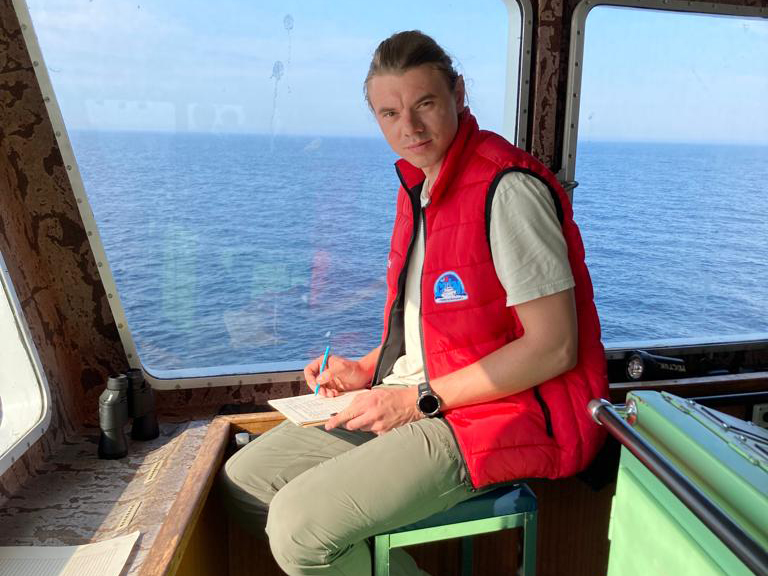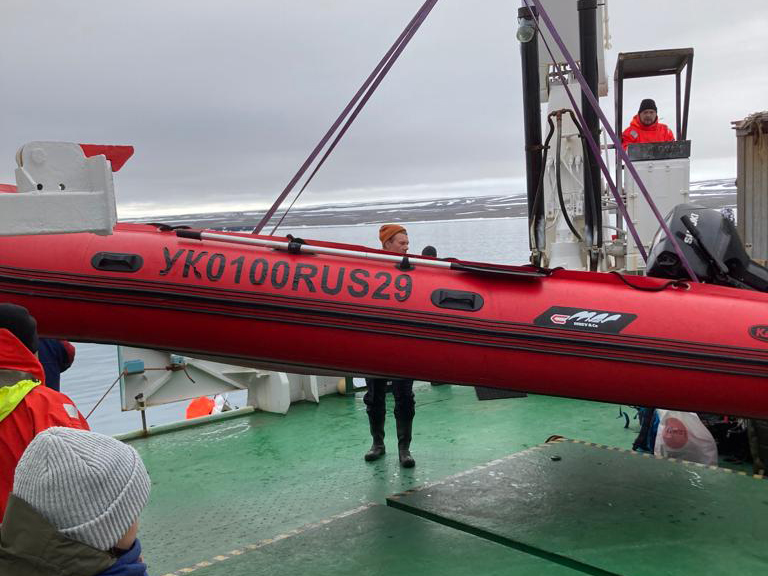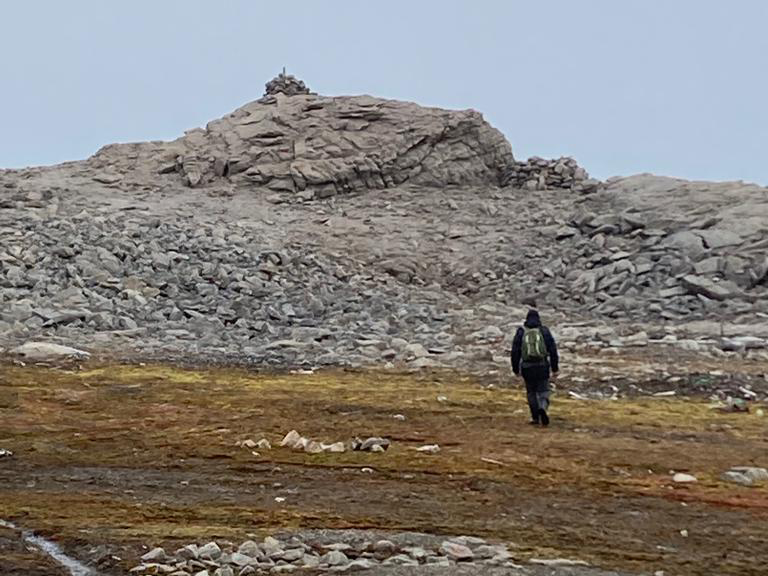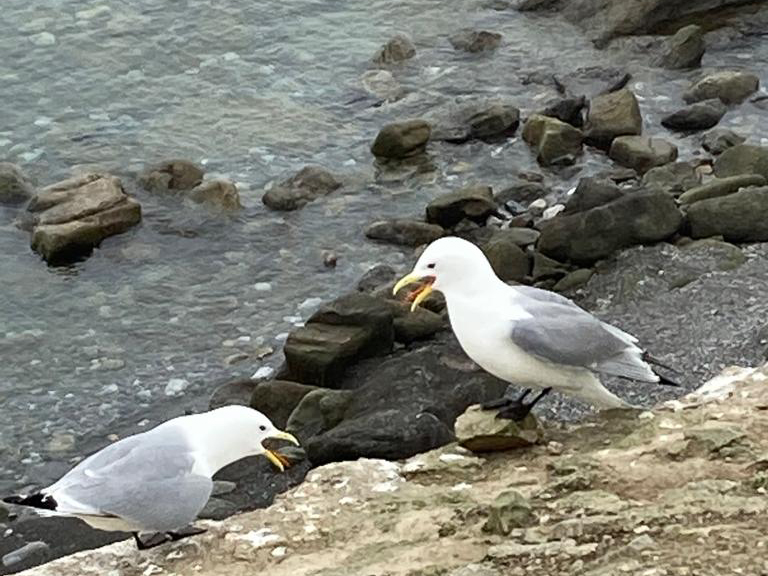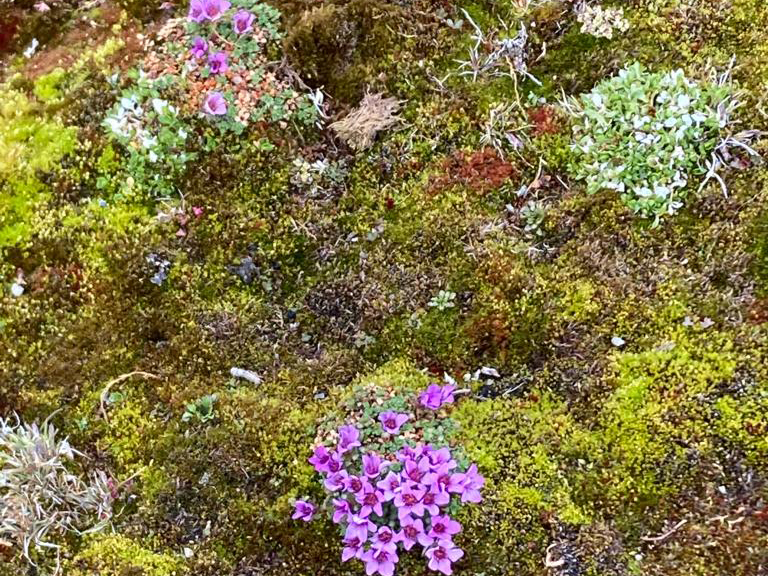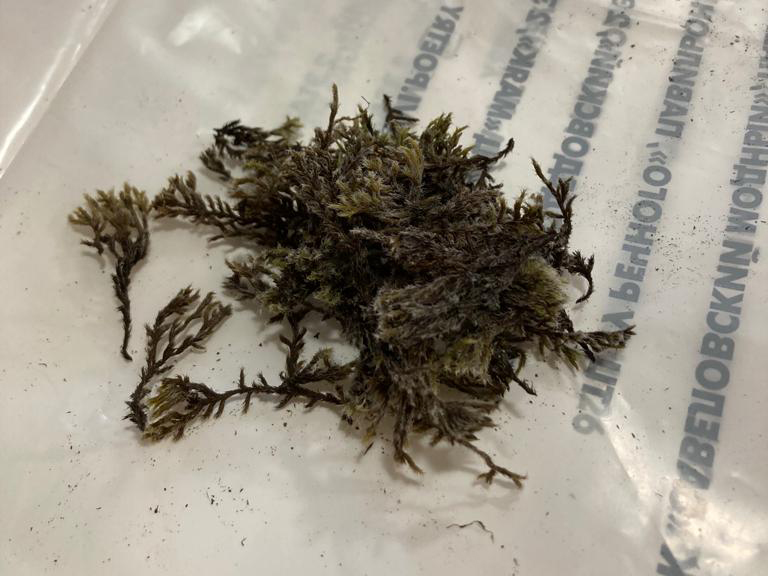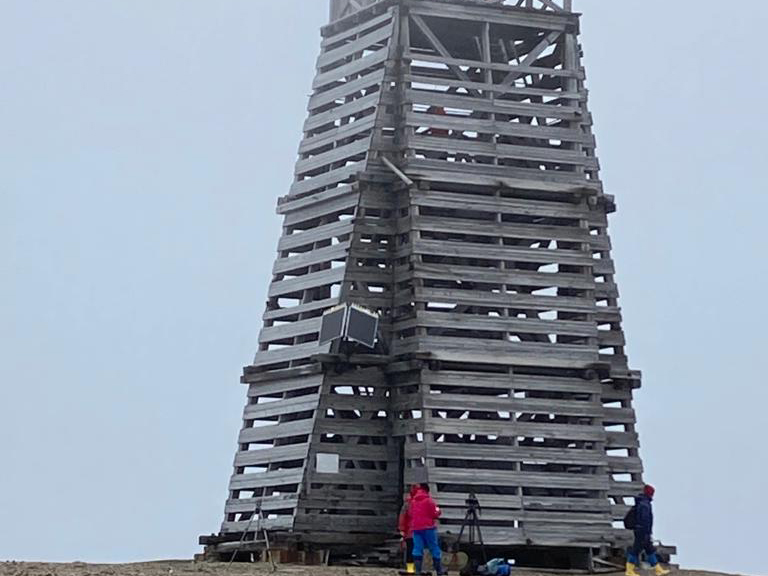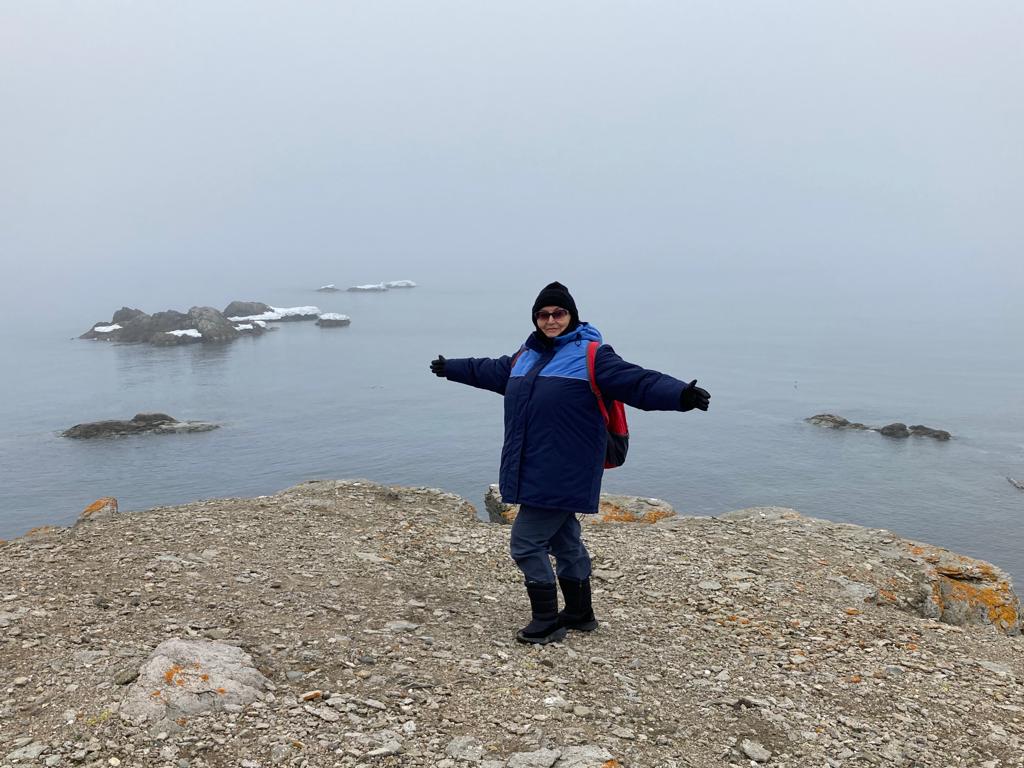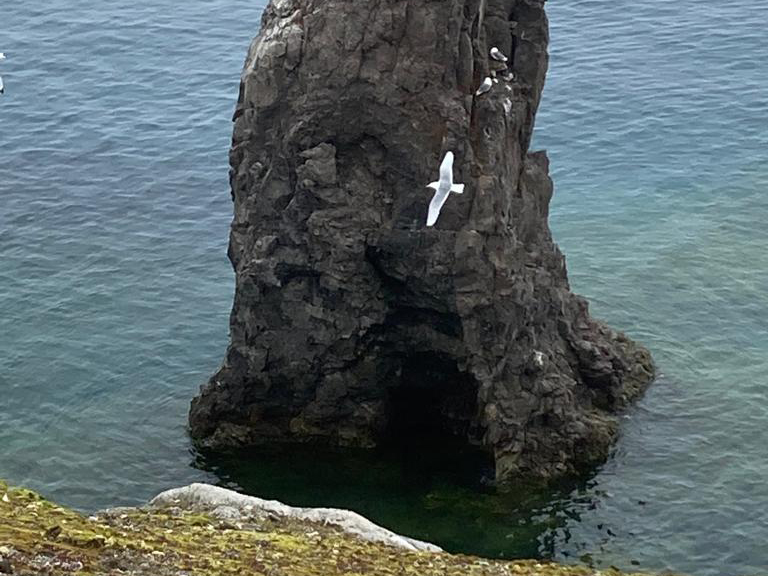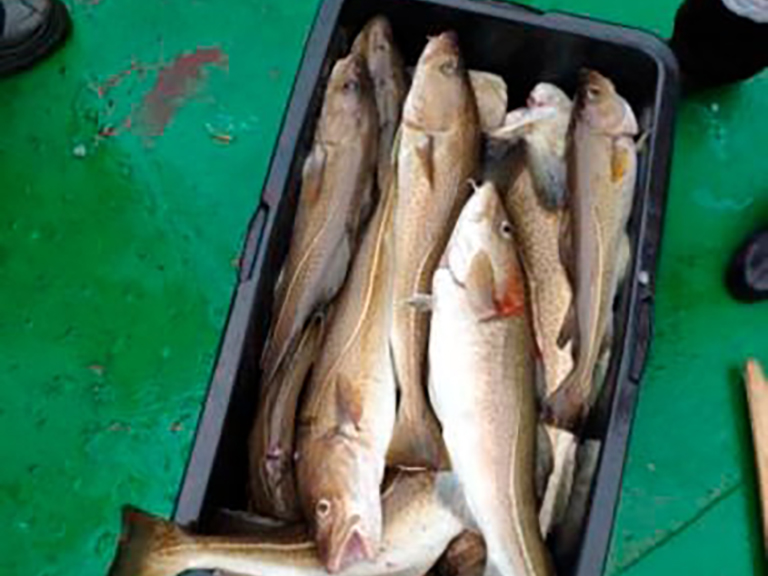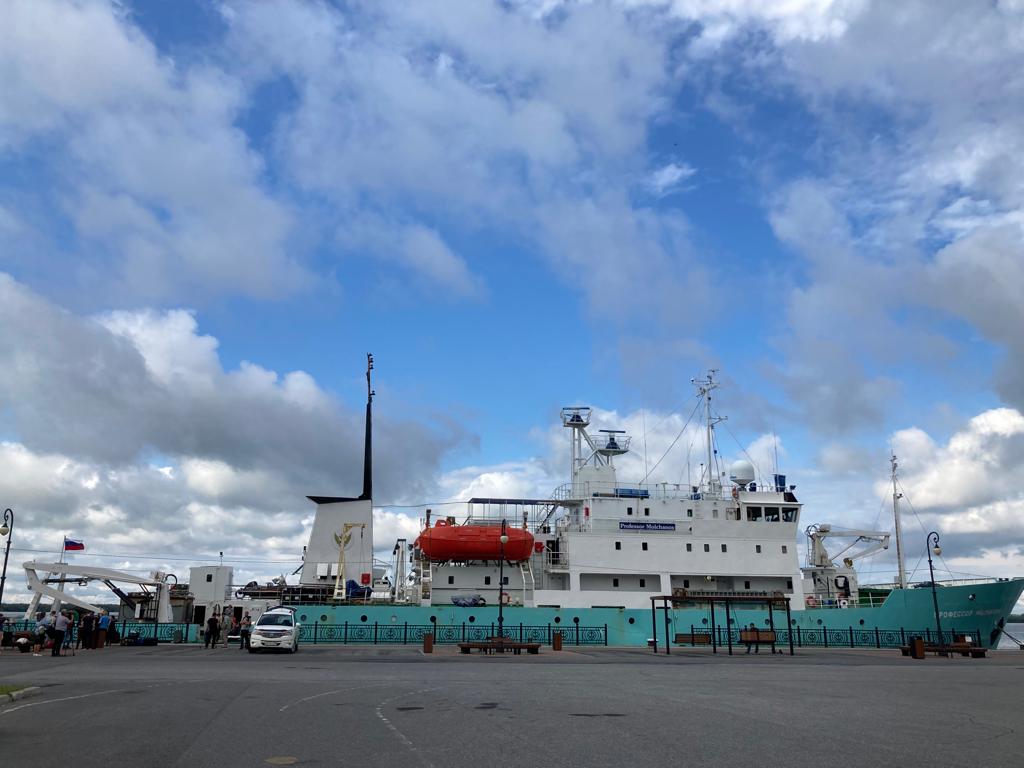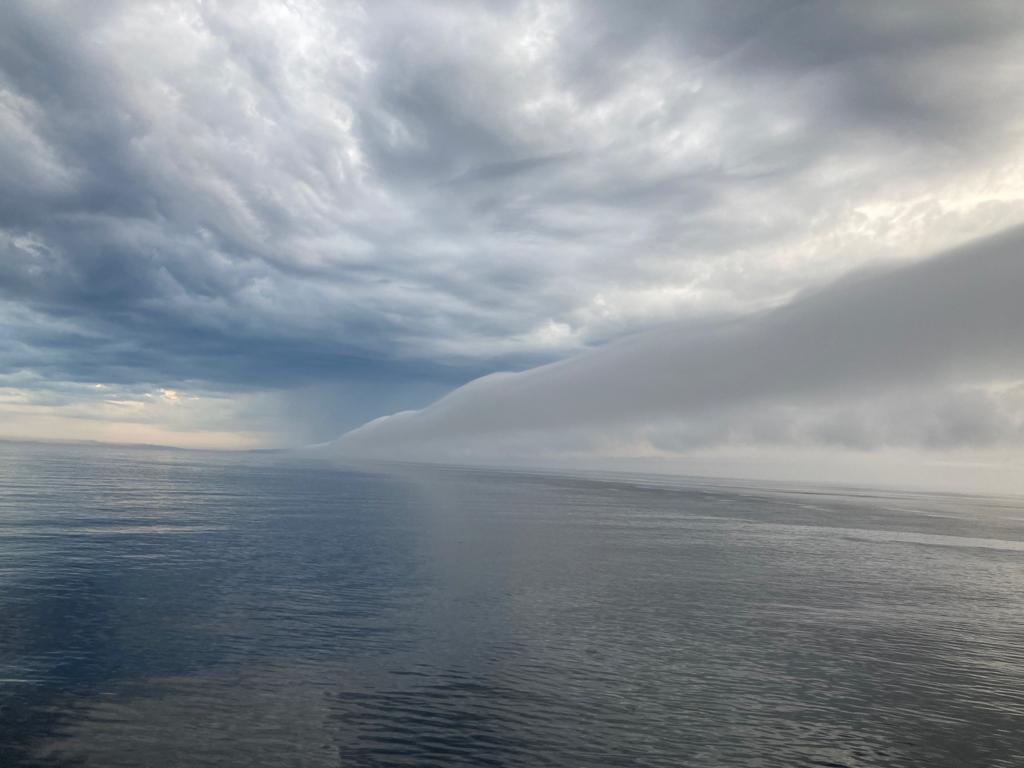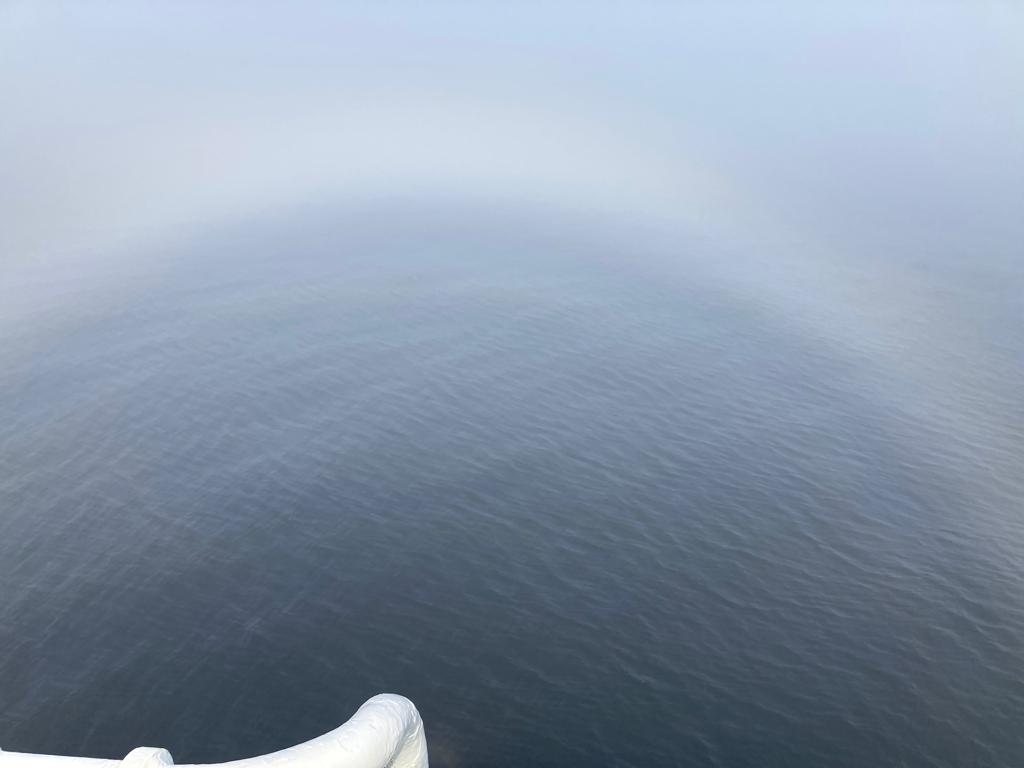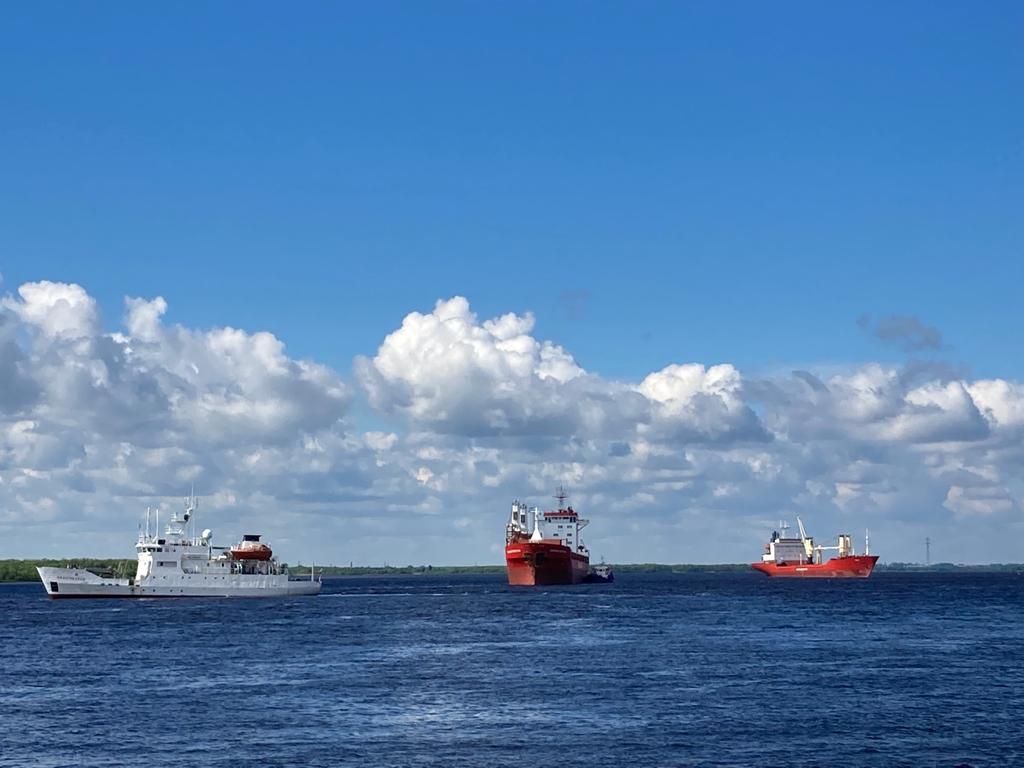Scientists of FLNP JINR study mosses and snows of Russian Far North
Media, 26 July 2022
On 16 July 2022, the 14th scientific and educational expedition “Arctic Floating University 2022: the Changing Arctic” finished in Arkhangelsk. Two JINR employees Marina Frontasyeva, the Advisor to the FLNP Directorate, and Nikita Yushin, a junior researcher at the FLNP Sector of Neutron Activation Analysis, got off the board of the Professor Molchanov research vessel among other participants. Following the results of the expedition, JINR scientists plan to study the heavy metal deposition in the Novaya Zemlya Archipelago by the moss biomonitoring method and analyse soils, bottom sediments, as well as to study space dust fallen in the polar snows.
The Arctic Floating University project has turned 10 this year. This is a joint project of the Northern (Arctic) Federal University n.a. M. V. Lomonosov (NArFU, Arkhangelsk) and the Northern Department of Hydrometeorology and Environmental Monitoring (Northern UGMS). In total, 55 participants from the following scientific and educational institutions and organizations joined the expedition team: the Arctic and Antarctic Research Institute (AARI), S. M. Kirov Military Medical Academy, Russian Federal Research Institute of Fisheries and Oceanography (VNIRO), Fedorovsky Polar State University (PSU), the Institute of Geography RAS (IG RAS), the Institute of Experimental Medicine (IEM), the Information and Analytical Centre of the State Commission for Arctic Development, Lomonosov Moscow State University (MSU), Russian Arctic National Park, the Joint Institute for Nuclear Research, the Russian State Hydrometeorological University (RSHU), RUDN University, St. Petersburg State University (SPBU), Chernyshevsky Saratov National Research State University (SSU), the Northern Department of Hydrometeorology and Environmental Monitoring, the Northern (Arctic) Federal University n. a. M. V. Lomonosov, the Northern State Medical University (NSMU).
The expedition was organized by NArFU with the support of many organizations engaged in the studies of the North of the Russian Federation. The expedition was brilliantly headed by Director of the NArFU Institute of Arctic Strategic Development Alexander Saburov and his deputies Anna Trofimova, Oleg Minchuk, and Dmitry Kovalev. They not only provided excellent organization of the expedition in general but also ensured the safety of works done during the stops of the Professor Molchanov scientific and research vessel. They also headed the lecture series on the icebreaker, which started at 9 in the morning and ended late at night with screenings of documentaries about the Arctic and Antarctica.
The scientific programme of the JINR employees in the Arctic expedition included the collection of samples of sea and lake bottom sediments, soils, and moss biomonitors. In total, they collected about 30 samples. Moreover, they collected samples of melted snow in which the researchers expect to find particles of space dust.
“We took part in six disembarkations on the Novaya Zemlya archipelago and Vaygach Island. Nikita Yushin not only fulfilled a large volume of works on sample collection but was also actively helping with responsible works of the expedition on sampling bottom sediments and water from the vessel. He also took part in the registration of flora and fauna in the territory of the Russian Arctic National Park under the supervision of an experienced ornithologist from the Institute of Geography RAS Irina Pokrovskaya,” Marina Frontasyeva said. During the expedition, the JINR researchers also got samples of mosses growing particularly on those northern islands in addition to the samples of bottom sediments.
“We already knew from the studies of the 2000s conducted on Spitsbergen and Senja Islands, Norway, jointly with Norwegian scientists that mosses grow in the North. From that experience, our desire emerged to close another white spot on the map of Russia and transfer the data to the UN programme on biomonitoring of atmospheric deposition of heavy metals and radionuclides in the Russian Arctic,” Marina Frontasyeva noted.
The IBR-2 reactor is shut down until the autumn 2023, so the collected data will be analysed not only with the use of neutron activation analysis but also other nuclear methods available in the Sector of Neutron Activation Analysis and Applied Research of FLNP. For example, inductively coupled plasma atomic emission spectroscopy (ICP-AES).
Scientific interests of other participants were quite extensive: ecology, oceanology, hydrometeorology, microbiology, ornithology, cultural studies, environmental assessment, in particular, the impact of microplastics on flora and fauna.
There were daily lectures by leading specialists in microbiology, urbanism, meteorology, climatology, and even history of the discovery and exploration of the Arctic and Antarctica. Recordings of the lectures will be soon available online. Marina Frontasyeva in her turn read two lectures on nuclear physics methods in ecology and one lecture on the opportunities of the JINR University Centre that aroused great interest among young participants of the expedition. They did not only listen to the lectures but also carried out research projects during the expedition. “I was pleasantly surprised by high quality of students’ reports, by their conscious presentation of the material and tasks set during the expedition,” Marina Frontasyeva said.
At the end of the expedition, scientists and students presented reports on the work done. Participants of the expedition managed to fully implement the research programme and even exceed the plan in some regards.
Despite the high comfort of living on the vessel, the expedition was a challenge for many participants and sometimes required a lot of physical effort. The disembarkations were accompanied by special security measures in order to protect scientists from the owner of the Arctic – the red book polar bear, the largest land predator. Six boats were used for disembarkations to divide researchers according to their scientific interests. In the first boat there were always inspectors with weapons and flares who examined the territory. Moreover, at the beginning of each disembarkation the territory was checked using a drone. It once showed that an adult polar bear was sleeping on the shore, so researchers had to change the debarkation point.
During the disembarkation on the Big Oransky islands (part of the Novaya Zemlya archipelago), fragments of a schooner, a pomor karbass dating back to the 18th century, had been brought on board. The schooner was built without any nails, by interlocking the constituent parts in a special way. The artefact, which is an expeditionary triumph for historians, will be included in the collection of the Museum of the Russian Arctic Park in Arkhangelsk. The work was led by Evgeny Yermolov, Head of the Department for the Preservation of the Historical and Cultural Heritage of the Russian Arctic National Park and a postgraduate student of the NArFU, with the active participation of Nikita Yushin who acted as a cameraman that time filming the entire process of packing and transporting the karbass fragments onto the ship.
As a result of the expedition, in JINR were established new contacts with scientists from scientific centres in Russia: with the Institute of Experimental Medicine and the Russian State Hydrometeorological University, the Peoples’ Friendship University of Russia (Moscow). “Many students have expressed their willingness to visit Dubna, to use the capabilities of our nuclear physics methods in their diploma works and tasks,” Marina V. Frontasyeva said. “We established contacts with an MSU geography student Arina Morkovskikh who also works on mosses biomonitors. We decided to work together on analysing mosses biomonitors. Perhaps we could attract her department to the UN air programme in Europe,” said Marina Frontasyeva.
A team of microbiologists from the RUDN undertook the expedition to search for and gather specific pink algae (Chlamydomonas nivalis), from which scientists hope to extract compounds with antibacterial and antimycotic properties – potential activity against bacteria and fungi. “We volunteered to help them determine the elemental composition of these algae, to understand what gives them that colour: either chemical elements such as iron or manganese, or pigments of organic origin. The capabilities of neutron activation analysis in biological research have interested a leading researcher, biologist Artemiy Goncharov,” Marina Frontasyeva commented and specified that she plans to hold a seminar at the Institute of Experimental Medicine in St. Petersburg on the use of NAA in elemental analysis of biological objects in August this year.
She also spoke about a sample of melted snow from a large ice core, which the associate professor Nadezhda Sachivkina from the RUDN Department of Microbiology and Virology provided. JINR scientists plan to identify cosmic dust in this sample. Cosmic dust is known to be falling on Earth in large amounts, but it is mostly particles that are invisible to the eye: micro- and nano-sized ones. “When analysing long-term melted snow, we hope to use electron microscopy to see cosmic dust particles from places not exposed to anthropogenic influences. It will be easy to identify the particles and we will not be able to confuse them with particles of anthropogenic origin. The result is expected to be very exciting!” Marina Vladimirovna stressed.
“We have also established contacts with Alexandra Ershova, Associate Professor, Head of the PlasticLab (RSHU, St. Petersburg). Her participation in our project with the IAEA on the use of nuclear-physical methods in the gathering and disposal of microplastics could prove extremely useful both for the university and for our IAEA project.
Cooperation with the Arkhangelsk university (NArFU) is also expanding. Apart from studying atmospheric deposition using mosses biomonitors in the Arkhangelsk Region with participation of a senior lecturer of the department, Head of the JINR Information Centre at NArFU Andrey Goshev and his students, the university maybe possibly interested in participation in the JINR project with South Africa to assess marine pollution using shellfish, which is successfully handled at NArFU by a 3rd year student of the Higher School of Natural Sciences and Technology Ksenia Manzurova. Thus, it would be possible to cover the waters in the South and North of our Earth in a supposedly large joint project…” Marina Frontasyeva shared her opinion.
The highlight of the expedition was a symbolic initiation into the polar explorers. At the ceremony on the deck of the vessel, participants were supposed to take a few sips from a mug of salt water from the White Sea and get a gentle hit in the head with the New Earth encyclopedia from expedition leader Alexander Saburov, followed by the presentation of souvenirs with the Arctic Floating University logo.
“Talking about our expedition, it is impossible not to mention the expedition’s cardiologist, Head of the Department of Paediatrics of the Northern State Medical University of the FMBA of Russia Leonid Zubov, who conducted instrumental examination of all the expedition participants at the beginning and end of their stay on the vessel in order to study adaptation to a long stay in the high latitude Arctic conditions. Not only did the majority of participants’ cardiovascular health did not deteriorate, but it went from “normal” to “improved”! The captain of the Professor Molchanov vessel Sergey Victorovich Khokhlov, made a vivid impression on the expedition participants. He came to our meetings and “strictly” instructed all the participants from young to old ones on the safety rules and rules of conduct on the boat. A man of great soul and devotion to the sea!” Marina Vladimirovna said.
Finishing the interview, Marina Frontasyeva expressed her gratitude to Rector of NArFU, Professor E.V. Professor E.V. Kudryashova and Vice-Rector of NArFU, Associate Professor M.K. Yeseev for the opportunity to participate in this unforgettable expedition to the Arctic. NArFU-JINR cooperation grows stronger!
The fourteenth expedition of the Arctic Floating University 2022 on the research vessel Professor Molchanov took place from 24 June to 16 July 2022. In twenty-two days, it sailed along the route Arkhangelsk – oceanographic section Zhelaniya Cape – Salm Island – Russkaya gavan’ – Murmantz ice gavan’-buchta – Cape Zhelaniya – Big Oransky Islands – Ivanov Bay – Varnek village (Vaygach Island) – oceanographic section Pechora Sea – Arkhangelsk. The expedition was held in the year of the tenth anniversary of the Arctic Floating University project. The expedition is part of the Russian chairmanship of the Arctic Council from 2021 to 2023. The programme of the expedition involves training young specialists to work in the Arctic together with Roshydromet staff and leading Russian and international research and educational institutions. The programme included research work in the Barents Sea and an educational component.
The JINR-NArFU cooperation within the AFU (Arctic Floating University) is carried out through the world-class REC Russian Arctic: New Materials, Technologies, and Research Methods. The Joint Institute’s participation in the programme is the result of cooperation with the Northern (Arctic) Federal University, on the basis of which the JINR Information Centre was opened in March this year. The staff members of the Sector of NAA and Applied Research have planned joint work with NArFU representatives on biomonitoring of atmospheric deposition in the Arkhangelsk Region. Head of the IC JINR at NArFU Andrey Goshev represents NArFU in this project.
The Arctic Floating University project is implemented thanks to the joint efforts of NArFU, the Russian Ministry for the Development of the Far East and the Arctic, VTB Bank, NOVATEK, MMC Norilsk Nickel, the Arkhangelsk Region Government, the Russian Geographical Society, and the Russian Arctic National Park.
Information support of the expedition: TASS News Agency, Rossiyskaya Gazeta, Komsomolskaya Pravda, Severny Gorod TV Channel (Norilsk), Russian Znanie Society, and the NArFU media centre.
